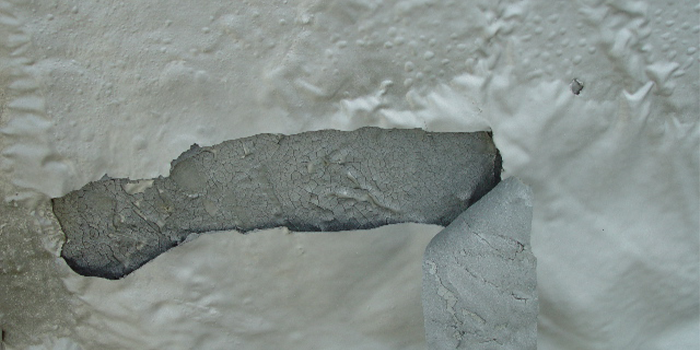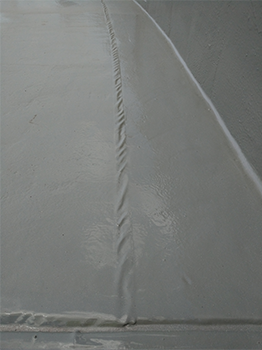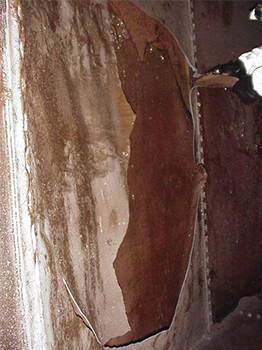Can You vs. Should You?


SPRAY FOAM MAGAZINE – Ah the curses of the English Language at times. We all remember the slogan “Be All You Can Be” right? This was the 1980s recruiting slogan of the United States Army and was in use for over twenty years. It was created by Mr. Earl Carter, a senior copywriter for the N. W. Ayer Advertising Agency and meant to inspire people to join the Army.
But one must ask, does can you mean the same thing as should you? A very good question, and some may actually use those terms interchangeably, but that does not make it necessarily correct. Can would be the physical ability to do something, though some may imply the permission to do so. Whereas should, or even the legal term shall, indicates obligation, duty or correctness to do something. Similar terms, but not the same.
For example, back in my younger years, after coming in from school, I would ask my Mom if I could go to a friend’s house and play. Mom would reply, “Son you can but you may not…” Hmm, I cogitated on that a bit, jumped on my bike and went to the friends house anyway. All good, right? Well, when I finally came home, when the streetlights came on, oh the “punishment” started. Questioning Mom about this and trying to understand, Mom replied, “Son I said you can, meaning you were physically able to do that. But you may not, you did not have my permission to do so.” Well, a very hard lesson learned there for sure!
What does this have to do with application of polyurea, or other protective coating systems and spray foam? Here are a few main examples related to what has been encountered in the field.
Application Over Water
Back in the late 1980s, Texaco Chemical Company produced a marketing video introducing the Polyurea Spray Technology. This was a great eight minute video that took three days of filming to produce, but provided the basics of the technology. In that video, one demonstration showed the application of a fast set polyurea spray system over water on a substrate. The purpose of this, and many forget, was to show that water does NOT interfere in the reaction, no foaming was noted, and formed a film over the water.
Since then, there have been numerous videos and training sessions where a cardboard box is lined with polyurea spray, then the box is filled with water to show no leaks, and then over coated to seal up, and even standing on afterwards. I also recall a company video where they poured water onto a piece of metal pipe, and then immediately spray over it, just wow factor here… Pretty neat demonstrations, right?
But the question begs here, can you spray over water with a true polyurea systems? Yes of course you can! But should you spray over water? No, you should NOT!
While spraying over water or wet substrate may in fact create a solid film and no foaming, the water interferes with the ability of the applied material to reach and interact with the substrate. In other words, it does not stick! You will get a blister, and the material will delaminate from the substrate, i.e. failure of the application.
In spray foam systems, having water, or a wet substrate, the water enters into the reaction of the system (due to the catalyst present) and leads to further expansion, elongated cell structure, blistering and potential shrinkage of the foam away from the substrate.
Application of a polyurea system over a wet substrate, either from a high moisture content in the substrate at or near the surface, or from condensation from not having the proper relationship of dew point temperature to substrate temperature is not a good idea. You can do it, but one should not.
The Use of Duct Tape
We have all used duct tape (duck tape), or other commercial equivalents in our everyday life. For those of us “country folks,” give me duct tape and bailing wire and I can fix anything, right?
Duct tape is nice and can be very sticky. But the top side is a thin polyethylene coating, and a polyurea and spray foam system will not stick to that. Yes, you can use it to repair or cover a joint or void in the substrate, but there is no adhesion of the applied polyurea system. Over time, or even in a very short period, a blister, lifting or wrinkling will occur in the applied polyurea system. This can lead to a failure in the applied lining work, so this should not be used.
It is best to use a proper fabric backed joint tape or geotextile fabric strip to make these repairs such that you achieve adhesion. There are a variety of these type of materials, commonly used in industrial flooring or roofing work. This is an example of duct tape being used in a concrete Crystal Lagoon project, wrinkling occurred within hours of application, due to non-bonding of the polyurea to the tape, and substrate expansion / contraction. While this was not a good idea, it was actually suggested by the material supplier.
Application Over Rust
Since most all polyurea spray elastomer systems are considered a barrier coating material, meaning they form a film to protect the substrate from contact with the environment and elements, they still have some permeability to vapor. Application of a polyurea or spray foam system can be applied and will surely stick / bond to the substrate rust, but is the rust well adhered to the substrate? And what else is going on here?
So basically, rust on a metal substrate is corrosion of the substrate. To have corrosion, four things shall exist: Anode, Cathode, Metallic pathway and an Electrolyte. If one removes any one of those four, accelerated corrosion will not occur. The only thing one can remove of course is the Electrolyte, and this is not just water, but ionic contaminates on the surface. Yes, there is natural corrosion of metal via oxidation of the iron, as well as MIC – Microbial Induced Corrosion, but our focus here for the purpose of this article is the rusting from contaminants, i.e. soluble salts present.


Since salts are hydroscopic and applied polyurea and spray foam systems are permeable, these salts can and will over time “pull” moisture vapor through the coating and/or foam system, form the electrolyte solution and corrosion will continue. This is referred to as Osmotic Blistering. Keep in mind that spray foam systems are much more permeable to moisture than a quality polyurea system, especially open-cell spray foam.
So, while you can spray over rusting, one should not as this corrosion will continue over time and lead to disbonding of the applied coating, a failure of the lining system. In addition, subsequent continued corrosion and deterioration of the host substrate that one has just covered up, is just simply a “band aid” so to speak over an infected substrate.
Conclusion
Please understand the difference between “Can You” and “Should You,” they are not the same. You can do about anything you want, but in order to achieve proper performance and protection, it comes down to should you do it. Just because you can do it, that does not make it correct and proper use.
Understand and evaluate the conditions of your substrate before application of these plural component systems. Follow a proper written specification with the manufacturer’s recommendation. And most importantly, please don’t take shortcuts, justifying because you saw a video or comment on Facebook, YouTube or TikTok that may not be appropriate. Understand the difference between Can, May, Should and Shall!
For use by SprayFoamMagazine.com & Spray Foam Magazine
Disqus website name not provided.










































